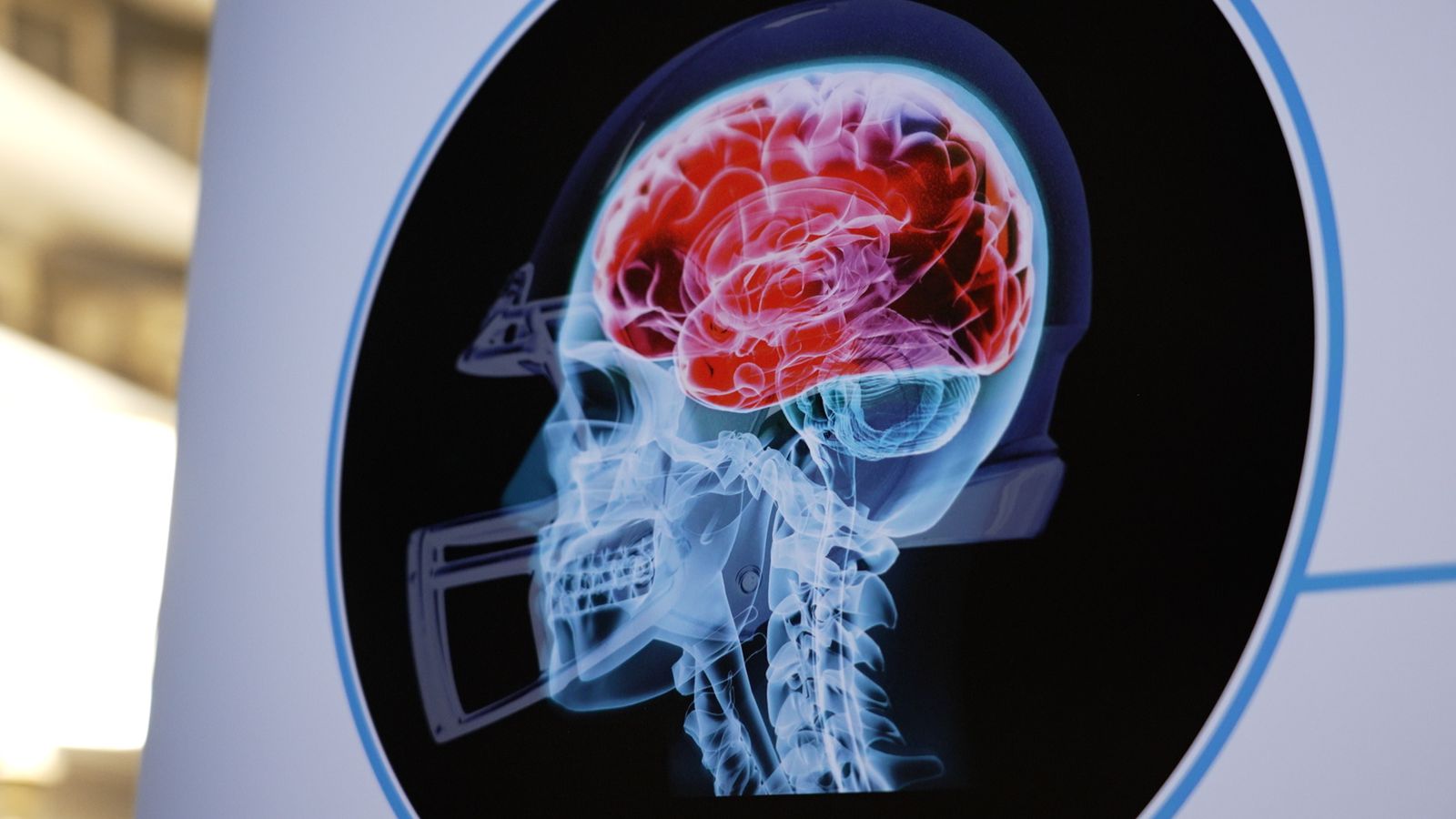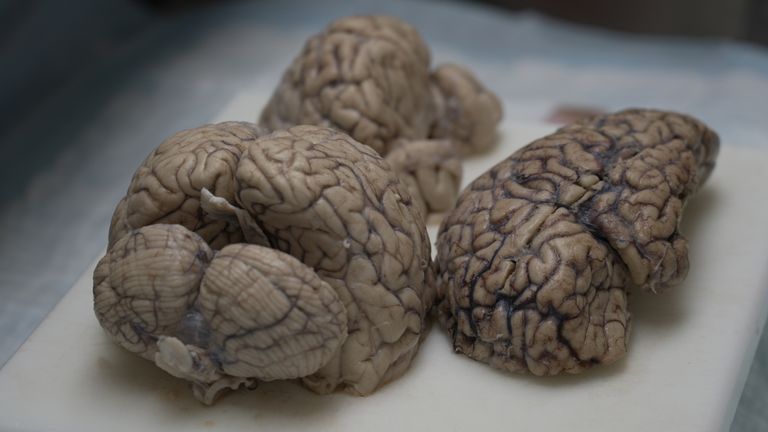The man who shot dead four people inside a New York City skyscraper left a note claiming he had CTE, a brain disease that has been linked to American football.
It’s believed the gunman, 27-year-old Shane Tamura, was targeting the headquarters of the NFL but took the wrong lift.
CTE can only be diagnosed by studying the brain after death, but in a three-page note discovered by police, Tamura made repeated references to the condition.
In his note, written on notepad paper in a variety of inks, he writes: “CTE study my brain, please. I’m sorry.” And again: “Please study brain for CTE. I’m sorry.”
He also refers to Terry Long, a former NFL player who starred for the Pittsburgh Steelers. He was diagnosed with CTE after drinking anti-freeze to take his own life 20 years ago.
Of course, there can be no conceivable justification to commit such a horrific act. But the attacker’s note will bolster calls for more investigation into a possible link between head injuries on the football field and violent crime.
What is CTE?
CTE or chronic traumatic encephalopathy is a degenerative brain condition caused by repeated head trauma.
Symptoms usually appear very gradually around 10 years after successive head injuries and will eventually lead to dementia, according to the NHS.
Initial symptoms include depression, suicidal thoughts, personality differences, and changes in behaviour, such as mood swings and aggression.
As the disease progresses, it impacts thinking and memory, resulting in memory loss, confusion, and problems with movement.
Symptoms may get gradually worse or stay the same for years before worsening.
Not all people who have suffered repeated concussions will get CTE, but it considerably heightens your risk.
Examples of environments that may lead to repeated head trauma include football, American football, rugby, boxing, martial arts, serving in the military, and suffering repeated assaults or domestic violence.
What’s the link to violent crime?
The symptoms of CTE include paranoia, aggression, and impulse control problems.
This has led to a theorised link between the condition and violent crime, which is increasingly cited in court cases.
Most famously, former NFL player Aaron Hernandez was found to have a severe case of CTE after he died by suicide in prison, where he was serving a life sentence for murdering his friend Odin Lloyd in 2013.
Days before his death in 2017, the former New England Patriots star was acquitted of a separate double-fatal drive-by shooting.
Kellen Winslow, a former NFL player, argued for his sentence for multiple rapes to be reduced because of head trauma on the football field.
Former San Francisco 49ers star Phillip Adams shocked the country when he shot dead six people, including grandparents and their two grandchildren, then himself, in 2021. He had severe CTE.
Most experts say it is hard to say definitively what motivates someone to commit a crime, but the symptoms CTE causes could all contribute.
More research into the causes of CTE and what factors might make some people more susceptible is under way. It is impossible to diagnose with the naked eye, instead requiring a sample of brain tissue to be analysed.
Brain banks, including the National Sports Brain Bank in Pittsburgh, ask former footballers to donate their brains for study after death.
Dr Julia Kofler, an associate professor of pathology there, tells Sky News: “It’s really difficult to draw any conclusions about what motivates someone to commit a crime based just on their pathology.
“But we certainly know that neurodegenerative diseases can cause all sorts of different behavioural changes and changes in executive function and judgement, so it certainly could have contributed [to Tamura’s offending].”
Tamura never played for the NFL but had a very successful high school football career in Southern California and was well-liked by his coaches and teammates.
It’s not known what he did after high school but he seemed to harbour animosity towards the NFL.
“The league knowingly concealed the dangers to our brains to maximise profits,” he writes in his note. “They failed us.”
In response to a Sky News investigation on the subject last year, the NFL provided details of the funding they are giving to CTE-related research, mental health support, and the physical safety measures they say they are taking in the sport.
Read more from Sky News:
Manhunt after couple hiking with kids killed in Arkansas
Ozzy Osbourne cortege to travel through Birmingham
Other cases
Last year, Sky News looked at the case of Noah Green, who was 25 when he crashed into a security cordon protecting the Capitol Building in Washington DC and stabbed police officer William Evans, killing him, before he was shot dead.
It was a murder that seemed to have little to do with American football.
But Green’s mother Mazie said she believes his crime was caused by brain injuries sustained on the American football field.
He had been a star player in high school but she said his personality changed after repeated concussions.
“He started these bad headaches. Real bad headaches,” she said. “He’s like, ‘I’ve got to get out of the country. They’re going to kill me’.”
Mazie believes Noah was suffering from paranoia.
After his death, the FBI recommended that his brain be examined. The diagnosis came back as stage 1 Chronic Traumatic Encephalopathy, or CTE.
Karen Kinzle Zegel is fighting for more research after her son, Patrick Risha, was revealed to have CTE after he died by suicide aged 32. He had played American football throughout his childhood and at university.
“We watched him over 10 years, sadly lose himself, lose his dignity,” she says, “He was paranoid, he was argumentative.
“One time there was an incident with him and he said a homeless guy attacked him in Pittsburgh and he broke his hand punching this person. The rage he had was definitely scary.”
Through her organisation Stop CTE, Karen is campaigning for the brains of those who commit mass violence to be analysed for traumatic injury.
“Every time we’re looking at the symptoms like ‘they lost a job, they, broke up with their girlfriend’.
“Everybody wants to know why, why would someone take another person’s life? But if you’ve dealt with somebody whose brain became unwired you see the lack of empathy. They don’t care about other people, sadly.
“We’re not going back to the root cause, which could be a damaged brain.”









Leave a Reply